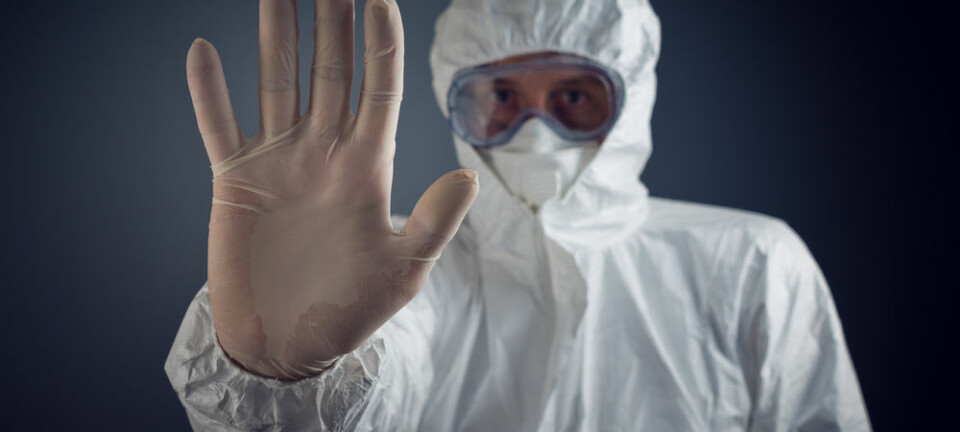
Mumps outbreak hits students in several Norwegian cities
Starting among students in Trondheim, the outbreak has now spread to Oslo and Bergen. Over 80 people are infected so far, more than twice as many as the previous record from 15 years ago.
Denne artikkelen er over ti år gammel og kan inneholde utdatert informasjon.
Between eight and 35 people in Norway have been infected by mumps annually in recent years, according to Margrethe Greve-Isdahl, chief physician at the Department of Vaccines for the Norwegian Institute of Public Health (NIPH).
Those cases have been spread throughout the year, so when over 80 cases erupt in a short time span, it’s a large outbreak in the Norwegian context, she said to forskning.no.
This beats the record from 15 years ago by a good margin.
Number of cases growing
Two weeks ago, students at the University of Bergen received an email urging them to take precautions to prevent mumps. Bergen’s infection control office followed up by posting flyers on the university’s notice boards.

The mumps outbreak started with some foreign students who were in Trondheim, and who hadn’t been or were unsure whether they had been vaccinated against mumps, says Greve-Isdahl. She would not say what country the carriers of the infection came from.
So far, at least four people have been confirmed infected in Bergen and three in Oslo. More are probably infected in Bergen, according to infection consultant Kari Stidal Øystese, but laboratory tests have not yet confirmed this.
She told adressa.no that she is expecting an epidemic. It is already clear that 2015 will go down as a record year for number of mumps cases.
Student festival was probably the catalyst
All the individuals infected in Oslo and Trondheim are connected to the student community. One of those infected in Oslo was in contact with students in Trondheim.
NIPH suspects that the infection may have spread during a student cultural festival held in October.
Although the incubation period is three weeks, it may have taken time for those who are now infected to see a doctor. The incubation period is the time between exposure to an infection and the appearance of the first symptoms. The disease is contagious from one week before to one week after developing symptoms.
“Some individuals may have become infected because the transmitters either hadn’t developed symptoms yet, or didn’t get very sick themselves. But they still could have infected others who were hit harder by it,” says Greve-Isdahl.
The Norwegian students who are infected now are young enough to have received the MMR vaccine through the childhood immunization programme when they were small. The programme has been offered since 1983.
Why do the vaccinated get sick?
Those who have recently become ill with mumps have stated that they were vaccinated.
Greve-Isdahl explains, “The mumps component of the MMR vaccine is the weakest one in the vaccine, and its effect can diminish over time, at least in some people. Plus, the vaccine doesn’t protect as well against some subsets of the mumps virus.”
Therefore, she emphasizes, younger children aren’t as prone to getting sick, because they were vaccinated more recently.
Those who are exposed to infection and have been vaccinated, and who develop symptoms, generally have milder disease symptoms, according to Greve-Isdahl. They are also less contagious to others.
No need for everyone to be re-vaccinated
NIPH recommends a second dose of mumps vaccine for certain individuals. “Mainly those who are missing one or both vaccine doses should get revaccinated,” said Greve-Isdahl.
It may also be appropriate for those who are in close contact with sick people to receive a third dose of vaccine. “But there’s no reason to give a general recommendation for a third vaccine dose for all students,” she says.
In a press release from the municipality of Bergen, infection consultants encourage anyone who has been in close contact with a mumps-infected person to get a booster dose of the MMR-vaccine, even if they are fully vaccinated.
The same goes for those who have only had one vaccine dose, and for foreign students who are not fully vaccinated.
Preventing mumps infection
Students in the largest cities are being encouraged to take precautions against the infection.
Mumps is transmitted by mucus, saliva or droplets from the nose or throat of an infected person.
“Frequent hand washing is important. Students shouldn’t share drinks with others or try other people’s food,” says Greve-Isdahl. And coughing should be done into the elbow. But she adds that coughing isn’t typical if you have mumps.
Mumps is rarely dangerous
Greve-Isdahl emphasizes that mumps is nowhere near as dangerous a disease as measles and rubella.
“We included mumps in the MMR vaccine because we want to limit the disease for the sake of boys. Boys who become infected after puberty may have complications with inflammation of the testicles, which can impair their ability to have children. These fertility problems may go away over time, so sterility is rarely long-term,” she says.



































